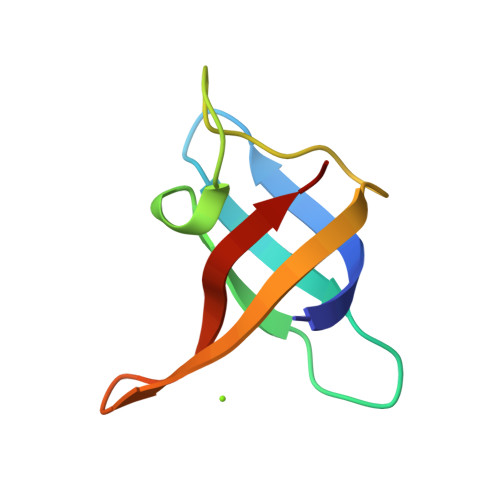Optimized variants of the cold shock protein from in vitro selection: structural basis of their high thermostability.
Max, K.E., Wunderlich, M., Roske, Y., Schmid, F.X., Heinemann, U.(2007) J Mol Biol 369: 1087-1097
- PubMed: 17481655
- DOI: https://doi.org/10.1016/j.jmb.2007.04.016
- Primary Citation of Related Structures:
2I5L, 2I5M - PubMed Abstract:
The bacterial cold shock proteins (Csp) are widely used as models for the experimental and computational analysis of protein stability. In a previous study, in vitro evolution was employed to identify strongly stabilizing mutations in Bs-CspB from Bacillus subtilis. The best variant found by this approach contained the mutations M1R, E3K and K65I, which raised the midpoint of thermal unfolding of Bs-CspB from 53.8 degrees C to 83.7 degrees C, and increased the Gibbs free energy of stabilization by 20.9 kJ mol(-1). Another selected variant with the two mutations A46K and S48R was stabilized by 11.1 kJ mol(-1). To elucidate the molecular basis of these stabilizations, we determined the crystal structures of these two Bs-CspB variants. The mutated residues are generally well ordered and provide additional stabilizing interactions, such as charge interactions, additional hydrogen bonds and improved side-chain packing. Several mutations improve the electrostatic interactions, either by the removal of unfavorable charges (E3K) or by compensating their destabilizing interactions (A46K, S48R). The stabilizing mutations are clustered at a contiguous surface area of Bs-CspB, which apparently is critically important for the stability of the beta-barrel structure but not well optimized in the wild-type protein.
Organizational Affiliation:
Makromolekulare Strukturen und Interaktionen, Max-Delbrück-Centrum für Molekulare Medizin, Berlin, Germany.


















